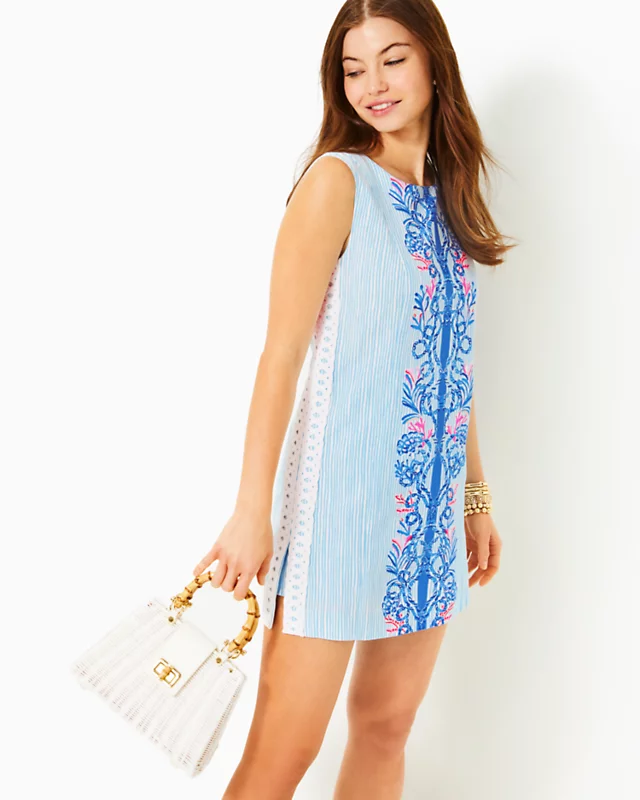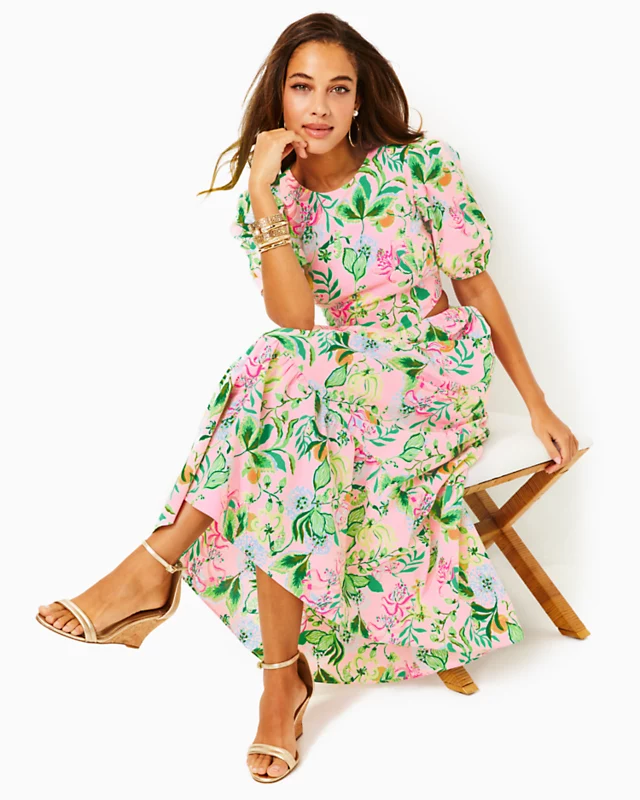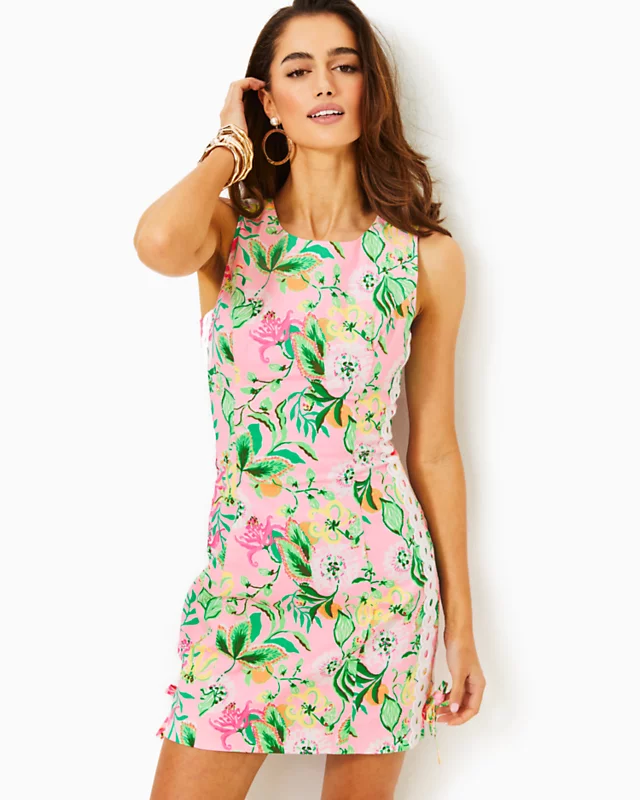How Lilly Pulitzer Created Her Iconic Shift Dress

Welcome to our podcast, Who What Wear With Hillary Kerr. Think of it as your direct line to the designers, stylists, beauty experts, editors, and tastemakers who are shaping the fashion-and-beauty world. Subscribe to Who What Wear With Hillary Kerr on Apple Podcasts and Spotify.
The origin story of Lilly Pulitzer's iconic shift dress is juicy. Pulitzer's husband owned orange groves in Florida, so she began selling the produce and later opened a juice stand in Palm Beach. As Pulitzer had to squeeze a lot of citrus at the stand, she realized that she needed a dress that would cover up the stains from the juice. She brought her idea for the now-iconic dress to her dressmaker, and then began wearing the "Lilly shift" to work.
"Obviously, customers started to ask where they could buy the dresses," Who What Wear senior editor Anna LaPlaca notes. "To reiterate, this is an early resort town. These are wealthy people who have access to couture, but here they are begging Lilly [Pulitzer] for these effortless, lightweight cotton dresses that were hanging at her juice stand."
For the latest episode of Who What Wear With Hillary Kerr, LaPlaca sits down with Who What Wear editor Jasmine Fox-Suliaman to discuss the origins of Pulitzer's signature shift dress, their favorite prints, and how it all began 65 years ago.
For excerpts from their conversation, scroll below.
Anna LaPlaca: To understand the brand, you really do have to understand the woman behind it. We've gotten to spend some time with the Lilly [Pulitzer] team and learn about Lilly Pulitzer's history, and the story is pretty remarkable. Take us back to the early '60s.
Jasmine Fox-Suliaman: If we think back to that period, it was defined by some of modern-day history's most influential countercultural movements across the country, from Philadelphia to Palm Beach. Young generations at that time were taking part in the Civil Rights Movement, in the anti-war movement, and the second wave of the feminist movement. As all of these larger movements were advocating for systemic change in society, they influenced a wave of women to set a new path for themselves. Obviously, one of these women was Lilly Pulitzer, who would tap into her entrepreneurial spirit at the same time and splash her signature bold, bright and happy prints onto the fashion world with one iconic style: The Shift dress.
JFS: From what I can recall, Lilly [Pulitzer] went to her dressmaker with some colorful cotton fabric, asking them to make something comfortable yet chic. But how did she come up with the effortless silhouette?
AL: Well, I think everyone here can attest to the ease of the shift dress. I know I can, personally. [Pulitzer] would wear it to work in the hot weather and was just able to do so without worrying too much about what she was wearing and the comfort of it all. Plus, of course, the colorful fabrics not only hid the juice stains, but they were also so beautiful to her that she started using the dresses as décor in the juice stand.
JFS: So she basically made this stylish shift dress for all of her shifts at the juice stand, which is incredible. But how exactly did it become a sensation?
AL: [Pulitzer] was the original influencer, naturally. Her free spirit and colorful confidence were infectious. Obviously, customers started to ask where they could buy the dresses. To reiterate, this is an early resort town. These are wealthy people who have access to couture, but here they are begging [Pulitzer] for these effortless, lightweight cotton dresses that were hanging at her juice stand.
JFS: What do you think makes the design process so special compared to other brands?
AL: Because so many of the prints are made entirely in-house, the brand actually gets to claim ownership over them, which, as we know, is very rare in this industry.
JFS: It's definitely fascinating because so much of textile production in fashion is centralized.
AL: I think that's what's so great about a Lilly Pulitzer print—it truly is one-of-one thanks to this bespoke creative process.
JFS: What's your favorite print from the brand?
AL: My favorite print is from the current line, and it's called Via Amore Spritzer. Naturally, I love it because it has an Italian name in it. It features delicate hand-painted flora and fauna mingling with parrots on a light-pink backdrop. To me, this is how you do a big print. The design is fun, but it's still elegant, breezy, and, of course, romantic.
AL: The [Lilly Pulitzer] spirit is alive and well in 2024.
This interview has been edited and condensed for clarity. Next, check out our interview with Julia Fox.


